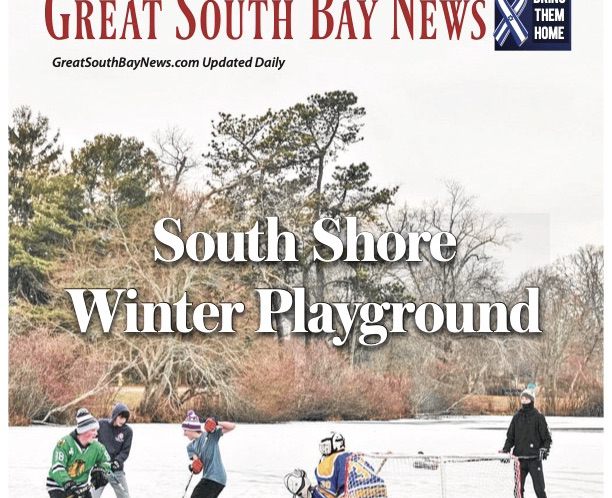By Savannah Doviak As summer remains in full swing, paddlers are taking to Long Island’s rivers, bays, and shores by the thousands, partaking in the fastest growing form of recreational boating in the United States. With relatively low entry costs, little maintenance, and the lack of physical demand required of the sport, there is no simpler, less expensive or inviting way to enjoy Long Island’s myriad of waterways. While there are few things more placid than an early morning out on the water, many paddlers lack proper experience, which can easily lead to misadventure.The Coast Guard reported that the rise in paddlesports has also meant a rise in the number of fatalities. “In the most recent reporting year, 2015, 29 percent of boating deaths were paddlecraft related; in 2016, fatalities climbed even higher,” reported the Coast Guard. With this in mind The Coast Guard Auxiliary Strategic Plan for 2017 focuses on expanding outreach to the paddlecraft community with new information regarding safety guidelines.“As a member of the Auxiliary, I focus a very keen eye on [paddlecraft] safety issues,” says David Mahler, Fire Island Pines resident and Flotilla Commander with the USCG Auxiliary 1313 of Bellmore, Merrick, and Wantagh. “In the trip from our homeport in Bellmore, to our summer slip in the Pines, we encounter so many people that are a danger to themselves, and others, by operating not only illegally, but more importantly, unsafe conditions. It takes so little effort to be sure that you and your family and friends are safe on the water.”According to the United States Coast Guard (USCG), about 17.8 million people participated in some type of paddlesports activity, adding that roughly 7.4 percent of the population enjoys paddling. “With an investment of just a few dollars,” they write, “people can gain access to the nation’s waterways and therein lies the problem. Most of these paddlers lack experience. They overestimate their skill level and fail to properly assess environmental conditions.”Even owning all the proper safety equipment will mean nothing if the needed skill to use that equipment is lacking. Weather can change quickly as you move further from shore causing strong currents.These guidelines include requiring paddlers to wear life vests and keep signaling devices such as whistles, flares or mirrors in the pockets. It’s also advised to keep drinking water, a bilge pump, personal locater beacon, and dry bag for storing a cell phone and extra clothes in your vessel. Labeling one’s vessel with their name and two working phone numbers is also encouraged, to quickly return a drifting kayak and prevent unnecessary searches. “I’m glad to see that the USCG is working to make paddlesports education more accessible and create necessary guidelines,” wrote Mike DeMarco of The Dinghy Shop in Amityville. “As paddlesports have rapidly grown in popularity, the education behind them has been lagging. Anyone can walk into a big box store for some eggs and milk and pick up a kayak at the same time. Unfortunately there aren’t any directions with it that explain the importance of a life jacket, the dangers of currents and winds, or any other safety advice. The majority of paddlesports related fatalities were all very preventable with a basic knowledge of paddlesports safety. Wearing a life jacket and understanding the very dynamic environment we paddle on is of the upmost importance. Hopefully the USCG’s push into paddlesports safety will be the key to breaking the increasing number of these preventable casualties.”You can often find these enthusiasts on some of Long Island’s most popular paddling destinations including the Great South Bay, Moriches Bay, Peconic Bay, Long Island Sound, as well as rivers such as the Nissequoque, Carmans, Peconic and Connetquot.More adventurous and experienced kayakers, will paddle off into the Atlantic surf in sea kayaks.Despite your ability, the best part of learning to navigate Long Island’s waters is the endless opportunity and solitude. Any boat ramp or public beach will do. No special accommodations, club memberships, or planning is required, only a spirit for adventure and the proper knowledge to stay safe.Editor’s Note: Commander Mahler also wishes to make readers aware that the USCG Auxiliary provides low cost boater education classes, and free vessel inspections, which include paddlecraft. To learn more, visit https://wow.uscgaux.info/content. php?unit=V-DEPT&category=i-want-a-vsc. Float plans are also advised. A float plan template can be found on https://floatplancentral. cgaux.org/download/USCGFloatPlan.pdf.
“I’m glad to see that the USCG is working to make paddlesports education more accessible and create necessary guidelines,” wrote Mike DeMarco of The Dinghy Shop in Amityville. “As paddlesports have rapidly grown in popularity, the education behind them has been lagging. Anyone can walk into a big box store for some eggs and milk and pick up a kayak at the same time. Unfortunately there aren’t any directions with it that explain the importance of a life jacket, the dangers of currents and winds, or any other safety advice. The majority of paddlesports related fatalities were all very preventable with a basic knowledge of paddlesports safety. Wearing a life jacket and understanding the very dynamic environment we paddle on is of the upmost importance. Hopefully the USCG’s push into paddlesports safety will be the key to breaking the increasing number of these preventable casualties.”You can often find these enthusiasts on some of Long Island’s most popular paddling destinations including the Great South Bay, Moriches Bay, Peconic Bay, Long Island Sound, as well as rivers such as the Nissequoque, Carmans, Peconic and Connetquot.More adventurous and experienced kayakers, will paddle off into the Atlantic surf in sea kayaks.Despite your ability, the best part of learning to navigate Long Island’s waters is the endless opportunity and solitude. Any boat ramp or public beach will do. No special accommodations, club memberships, or planning is required, only a spirit for adventure and the proper knowledge to stay safe.Editor’s Note: Commander Mahler also wishes to make readers aware that the USCG Auxiliary provides low cost boater education classes, and free vessel inspections, which include paddlecraft. To learn more, visit https://wow.uscgaux.info/content. php?unit=V-DEPT&category=i-want-a-vsc. Float plans are also advised. A float plan template can be found on https://floatplancentral. cgaux.org/download/USCGFloatPlan.pdf.


























